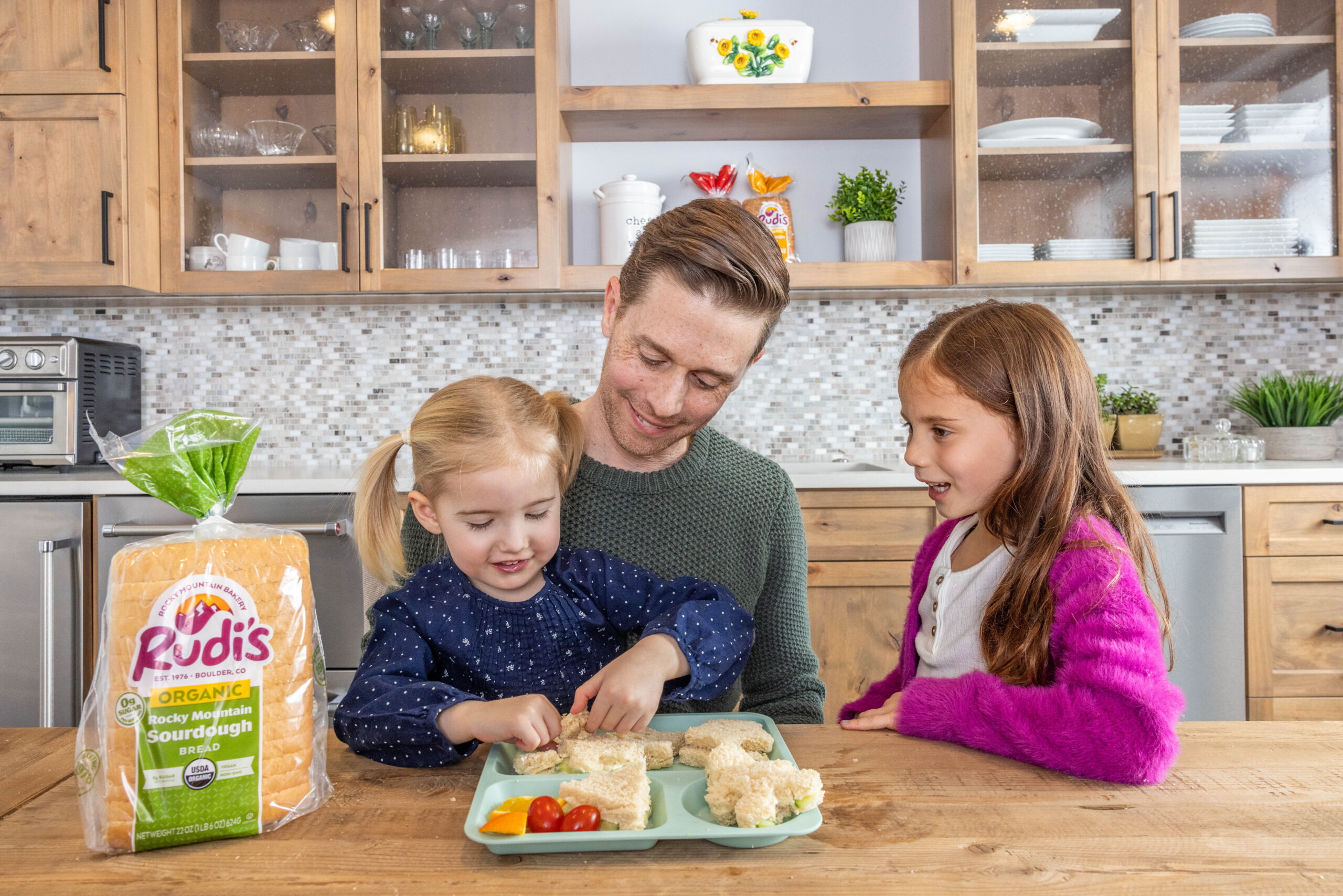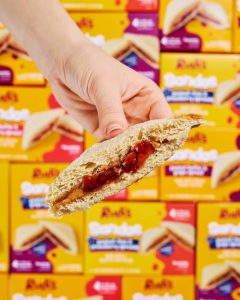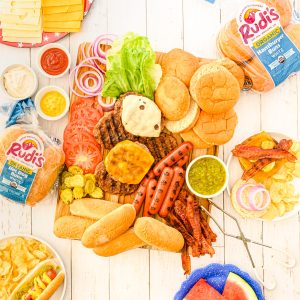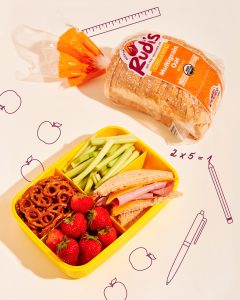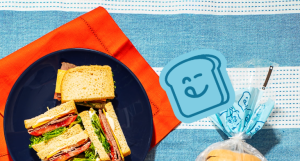Parents will try almost anything to get picky eaters to try healthy foods. If you’re at a standstill for what to do, tap into the power of kids’ curiosity. Kids are naturally more explorative than adults, so you can use their intuition to your advantage.
Our dietitian Jessie shares some open-ended questions to ask during meal times that get kids more engaged and curious about what’s on their plate.
Conversation Starters For Picky Eaters At The Dinner Table
Work a few of the following table topics to encourage healthy eating at your next family meal. Since you don’t want to stifle conversations that come up naturally, work these questions into the flow slowly and not in a rapid fire order.
As you expand from this list, avoid asking yes-no questions, and ask them to the adults, too, so kids aren’t the only ones answering. These young age-appropriate food-centered questions keep the focus on the meal and encourage young children to get more curious about their bites, options, and preferences.
- If you were to add one different food to this dinner, what would it be and how would you prepare it?
- What are three words you can use to describe the taste of our main dish?
- When you take a bite of [food A] and then a bite of [food B], what differences do you experience?
- What is something you didn’t think you would like, but then you changed your mind after tasting it?
- If you could only eat one type of fruit for the rest of your life, which would it be?
- Does this dinner give you any memories? When have you tasted these foods before?
- What’s your [favorite food, favorite movie, favorite person, favorite book, best friend] and why?
- Name the colors you see in this meal. If you could have a meal made entirely out of [color] foods, what would it include?
- What’s the weirdest food combination you’ve ever tried that turned out to be delicious?
- If you could design your own ice cream flavor, what ingredients would you use?
- Would you rather: Have to eat your soup with a fork or have to cut your meat with a noodle?
- What’s your kitchen super power? Something you just naturally do well when it comes to food, eating, or cooking?
- How would you describe this meal if you were a waiter at a restaurant? What words would you say or read from a menu?
- What is your favorite family tradition that we do?
- What famous person or cartoon character would you like to invite to dinner?
- If you had to eat a million of something [chicken nuggets, sweet potatoes, cucumbers, etc.] how many would you eat before you couldn’t possibly take another bite?
- Name a food or drink that you saw on a TV show, and would you eat/drink it?
- What’s your earliest memory of eating food? What do you remember being served?
- What is your favorite thing to eat at [name a holiday, such as Christmas or Thanksgiving]
- Turn your plate into emotions. Which food is the funniest? The happiest? The most confused?
Kids will love to hear your responses and stories, too. If the flavors of the meal or one of the questions reminds you of a childhood story or relatable memory, be a good role model and share that with your family. Then, be open to the follow-up questions they ask. It’s OK to repeat stories or let the conversation flow off topic (this isn’t a meeting), and moments of silence are just fine, too!
Before you know it, you’ll have more engaging family meals, foster healthy eating habits, and perhaps even generate more closeness with those you love.
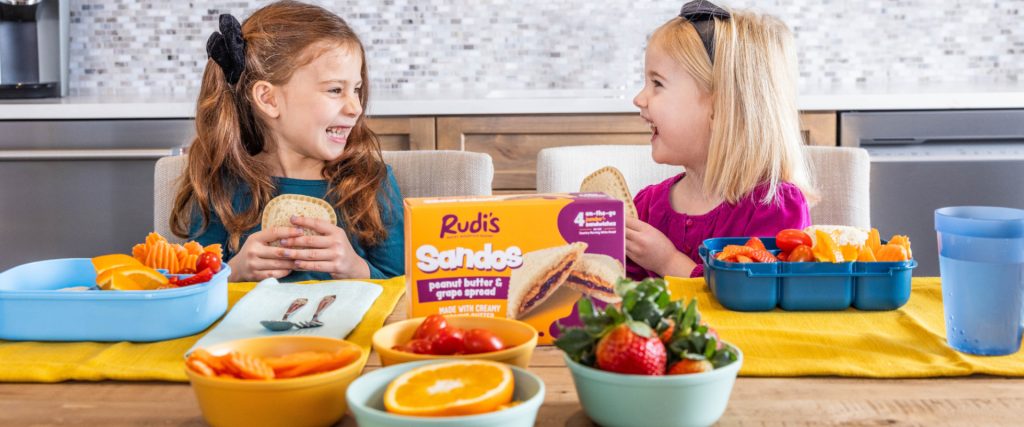
Get Kids To Try New Foods At Family Dinners
Here are some ideas designed to pique kids’ curiosity at mealtimes and get the whole family involved in family dinner conversations. Instead of adding these ideas for every meal, work them in occasionally so they don’t become mundane.
- Introduce Color: A bright plate, cup, or small bowl is inviting for kids. Use a colorful set of silicone muffin cups to divide portions of the meal, or even forgo the plate and set foods on a brightly colored placemat or tray. Creating a small rainbow of food groups on the plate (red bell pepper strip, orange carrot strip, yellow cheese slice, green beans, etc) also helps draw kids into the meal.
- Kids Love Quirk: Every once in a while, forgo regular utensils and let preschoolers have some food fun by eating with small food picks (like these bento box picks from amazon). Or add interest by cutting veggies or other nutritious foods into fun shapes with cookie cutters or a spiralizer. Or shape the food choices into a smiley face or other scene, then eat parts of the picture together.
- Make Them Meal Planners: Ask picky eaters for their input when you write out your meal plan for the week (ie: We’re going to have chicken on Thursday night. What side dishes should we add to that meal?). When a child helps in the planning process (or even shopping at the grocery store), they feel more connected to meals, learn their food preferences, can help select a variety of foods, and show up to the table with more enthusiasm.
Further set yourself up for success with some simple dinnertime strategies that work.
The Bottom Line
You can tap into the curiosity of kids to get them more engaged with food and family at mealtimes. Asking open-ended food questions will remove the focus on the child’s picky eating and keep the focus on the meal. Introducing other novel ideas, such as color, shapes, and fun utensils, can keep meals exciting for kids. Before you know, stressful family dinners can turn into the best part of your day.
Written by Jessie Shafer.
Jessie is a Registered Dietitian Nutritionist living in Colorado where she splits her time among nearby playgrounds, typing away at her trusty laptop, and heating up her home kitchen with delicious experiments. A former magazine editor-in-chief, Jessie has a long career in food publishing and health writing. She is currently the editor at The Real Food Dietitians and a nutrition consultant through her business crdible.

